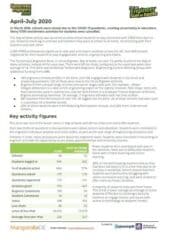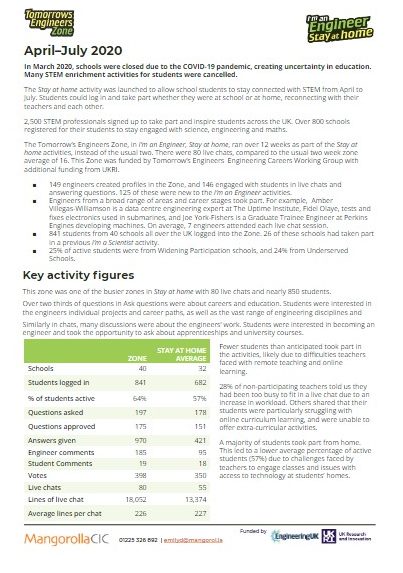In April 2020, I’m an Engineer, Stay at home was launched to allow school students to stay connected with STEM during the school closures due to coronavirus. Students could log in and take part whether they were at school or at home, reconnecting with their teachers and each other.
The Tomorrow’s Engineers Zone, in I’m an Engineer, Stay at home, ran over 12 weeks as part of the Stay at home activities, instead of the usual two. There were 80 live chats, compared to the usual two week zone average of 16. This Zone was funded by Tomorrow’s Engineers Engineering Careers Working Group with additional funding from UKRI.
- 149 engineers created profiles in the Zone, and 146 engaged with students in live chats and answering questions. 125 of these were new to the I’m an Engineer activities.
- Engineers from a broad range of areas and career stages took part. For example, Amber Villegas-Williamson is a data centre engineering expert at The Uptime Institute, Fidel Olaye, tests and fixes electronics used in submarines, and Joe York-Fishers is a Graduate Trainee Engineer at Perkins Engines developing machines. On average, 7 engineers attended each live chat session.
- 841 students from 40 schools all over the UK logged into the Zone. 26 of these schools had taken part in a previous I’m a Scientist activity.
- 25% of active students were from Widening Participation schools, and 24% from Underserved Schools.



